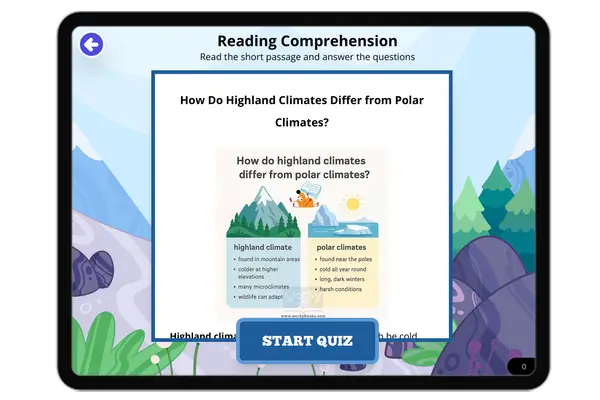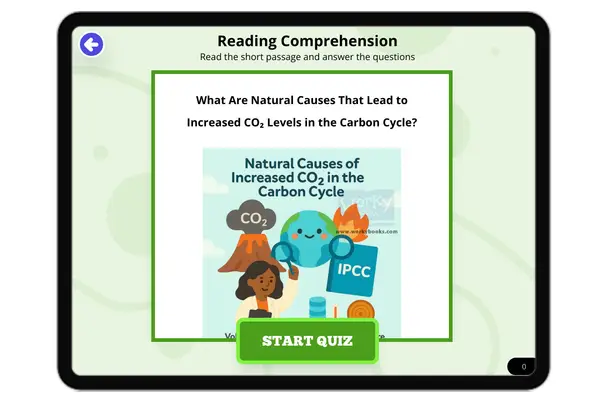What Is the Temperate Zone? — Reading Comprehension
Grades
- 5
- 6
- 7
- 8
Standards
- MS-ESS2-6
PRINT+DIGITAL RESOURCE
This learning resource is available in interactive and printable formats. The interactive worksheet can be played online and assigned to students. The Printable PDF version can be downloaded and printed for completion by hand.
About This Reader
This NGSS-aligned reading passage explains the location and characteristics of the temperate zone. Students learn that temperate zones lie between tropical and polar regions and experience four seasons: spring, summer, autumn, and winter. The passage describes how Earth’s tilt and orbit create these seasonal changes and explains why this zone is ideal for farming, biodiversity, and human settlement. Designed for middle school learners, it supports science literacy with clear definitions, examples, and vocabulary activities aligned to Earth and environmental science standards.
Perfect For:
👩🏫 Teachers
- • Reading comprehension practice
- • Auto-graded assessments
- • Literacy skill development
👨👩👧👦 Parents
- • Reading practice at home
- • Comprehension improvement
- • Educational reading time
🏠 Homeschoolers
- • Reading curriculum support
- • Independent reading practice
- • Progress monitoring
Reading Features:
📖
Reading Passage
Engaging fiction or nonfiction text
❓
Comprehension Quiz
Auto-graded questions
📊
Instant Feedback
Immediate results and scoring
📄
Printable Version
Download for offline reading
🔊
Read Aloud
Voice-over with word highlighting










